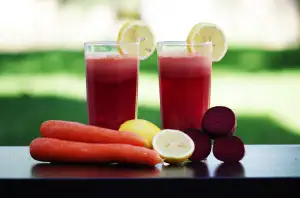Indulge in Elegance: Elevate Your Afternoon with a High Tea Experience

High tea is a beloved British tradition that has been enjoyed for centuries. Unlike the dainty afternoon tea, high tea is a more substantial meal traditionally served in the late afternoon or early evening. It originated among the working class in England during the 19th century and was meant to be a heartier meal to fill the gap between lunch and dinner. Today, high tea has evolved into a sophisticated affair, offering an array of sweet and savory treats accompanied by a steaming pot of tea. Join us on a journey to explore the elegance and charm of high tea.
History and Origins of High Tea
High tea originated in the 18th century in England, initially as a working-class evening meal. The term "high tea" comes from the height of the tables where it was served, rather than the social status of those partaking. It was a heartier meal than afternoon tea, consisting of dishes like meats, pies, and bread, accompanied by tea. Over time, high tea evolved into a more elegant affair enjoyed by the upper class, with delicate pastries and sandwiches being added to the menu. Today, high tea is often associated with luxury and sophistication, offering a delightful culinary experience for all who partake.
Traditional High Tea Menu
High tea traditionally consists of a selection of savory and sweet items served on a tiered stand. The menu typically includes freshly baked scones with clotted cream and jam, delicate cucumber sandwiches, and indulgent pastries like the classic Victoria sponge cake. These items are accompanied by a pot of freshly brewed tea, often served in fine china teacups. The combination of savory and sweet treats makes high tea a delightful experience for those looking to indulge in elegance during the afternoon.
Classic High Tea Recipes
4.1. Scones with Clotted Cream and Jam
Scones are a quintessential part of any traditional high tea experience. These light and fluffy pastries are typically served warm, accompanied by clotted cream and jam. The clotted cream adds a rich and creamy texture, while the jam provides a sweet contrast to the slightly savory scone.
4.2. Cucumber Sandwiches
Cucumber sandwiches are another staple of classic high tea menus. These delicate finger sandwiches consist of thinly sliced cucumbers sandwiched between buttered bread. The refreshing crunch of the cucumber paired with the creamy butter makes for a simple yet elegant treat.
4.3. Victoria Sponge Cake
No high tea spread would be complete without a slice of Victoria sponge cake. This classic British cake consists of two layers of sponge cake sandwiched together with jam and whipped cream or buttercream frosting. Its light and airy texture makes it the perfect sweet ending to a high tea gathering.
1. Scones with Clotted Cream and Jam
Scones with clotted cream and jam are a quintessential component of a traditional high tea experience. These delicious pastries originated in Scotland and became popular in England during the 19th century. The scone's light and fluffy texture pairs perfectly with the richness of clotted cream and the sweetness of jam. When served warm, scones are a delightful treat that can be enjoyed at any time of day, but they truly shine during an elegant afternoon tea setting.
2. Cucumber Sandwiches
Cucumber sandwiches are a quintessential component of a traditional high tea menu. Originating in the 19th century, these delicate finger sandwiches were popularized by the Duchess of Bedford, who is credited with starting the British tradition of afternoon tea. The simplicity of cucumber sandwiches lies in their thinly sliced cucumbers layered between buttered bread, often with a hint of seasoning like salt and pepper. This light and refreshing sandwich perfectly complements the rich and sweet treats typically served during high tea, providing a balance to the overall spread.
3. Victoria Sponge Cake
The Victoria Sponge Cake is a quintessential dessert in the traditional High Tea menu. Named after Queen Victoria, who enjoyed a slice with her afternoon tea, this light and airy cake consists of two layers of sponge cake sandwiched together with raspberry jam and whipped cream. It is typically dusted with powdered sugar on top for an elegant finish. The simplicity of this cake allows the quality of the ingredients to shine through, making it a timeless favorite among tea enthusiasts worldwide.
Modern Twists on High Tea Dishes
Modern twists on traditional high tea dishes have become increasingly popular, offering unique and innovative flavors to elevate the experience. Some contemporary variations include matcha scones, smoked salmon and avocado sandwiches, and Earl Grey-infused macarons. These modern interpretations add a touch of creativity while still honoring the essence of a classic high tea spread. Experimenting with different ingredients and flavor combinations can bring a fresh perspective to this timeless tradition, appealing to both traditionalists and those seeking a more adventurous culinary experience.
Tips for Hosting a High Tea Party
1. Set the Scene: Create an elegant ambiance with fine china, linen tablecloths, and fresh flowers to capture the essence of a traditional high tea experience.
2. Select a Variety of Teas: Offer a selection of black, green, herbal, and floral teas to cater to different preferences. Provide milk, lemon slices, and sugar cubes for guests to customize their tea.
3. Prepare a Well-rounded Menu: Include a mix of savory and sweet treats such as scones, finger sandwiches, cakes, and pastries to provide a balanced high tea spread.
4. Serve Freshly Made Food: Ensure that all the dishes are freshly prepared on the day of the event to maintain their quality and taste.
5. Arrange Food Beautifully: Present the food on tiered cake stands or elegant platters to showcase the delicacies and add to the visual appeal of the table.
6. Offer Accompaniments: Provide traditional condiments like clotted cream, jam, lemon curd, and butter for guests to enjoy with their scones and sandwiches.
7. Consider Dietary Restrictions: Inquire about any dietary restrictions or allergies when sending out invitations and prepare alternative options accordingly.
8. Encourage Socializing: High tea is as much about conversation as it is about food, so encourage mingling by setting up seating arrangements that facilitate interaction among guests.
9. Provide Entertainment: Consider adding a musical element or hosting a small activity like flower arranging or hat decorating to enhance the overall experience.
10. Enjoy Yourself: As the host, remember to relax and enjoy the company of your guests while savoring the delights of your carefully curated high tea party spread.
High tea is not just a meal; it's an experience that combines elegance, tradition, and delicious flavors. Whether you choose to embrace the classic recipes or put a modern twist on traditional dishes, hosting a high tea party is a wonderful way to indulge in sophistication and create lasting memories with friends and family. So next time you want to elevate your afternoon, consider treating yourself to the refined charm of a high tea experience. Cheers to savoring the delightful flavors and embracing the timeless tradition of high tea!
Published: 25. 04. 2024
Category: Recipes



